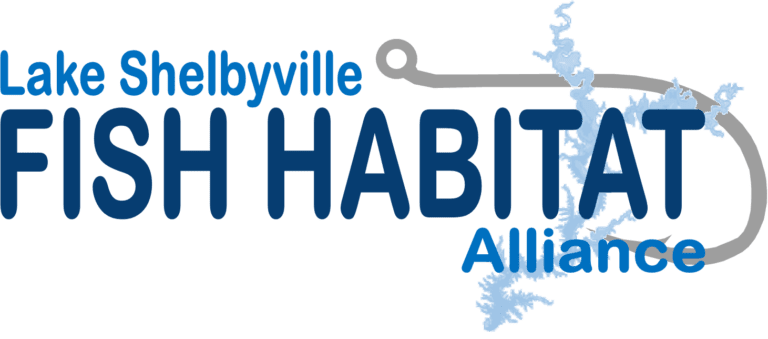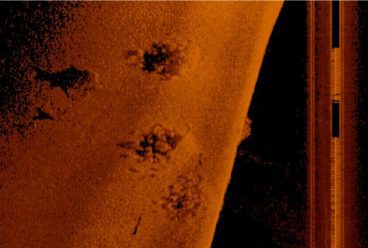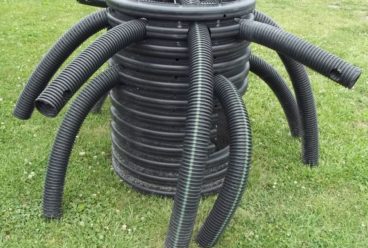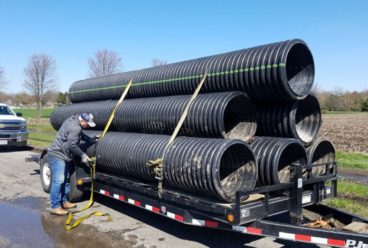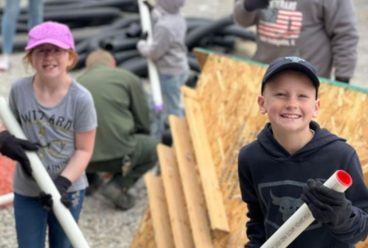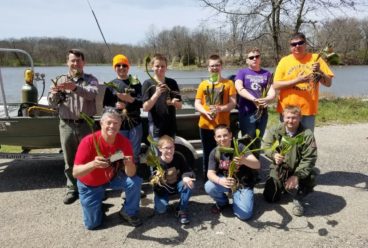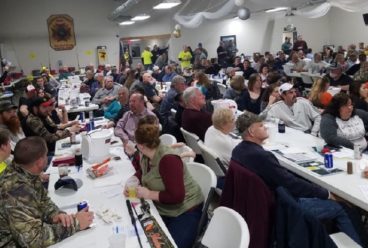Overview
-
Status
Ongoing -
Estimated Completion
2023 -
Grants Received
$132,750 -
Total Budget
$11,826,600 -
Friends Group
Lake Shelbyville Fish Habitat Alliance -
Partners
See complete list below
This multi-faceted project supports the National Fish Habitat Partnership (NFHP) Priorities:
- Protect Intact Healthy Waters, (i.e. Nutrient Absorption, Erosion Control, and Habitat Development), through LSFHA’s and partners’: Rock Pile Clusters, Aquatic Plant Plantings, Floating Islands, Shelbyville Cubes, Georgia Cubes, Artificial Stumps, Shoreline Rock Revetment, and Dredging.
- Restore Hydrologic Conditions For Fish (i.e. Nutrient Absorption, Erosion Control, and Habitat Development), through LSFHA’s and partners’: Aquatic Plant Plantings, Floating Islands, and Dredging.
- Reconnect Fragmented Fish Habitats (i.e. Habitat Development to Offset Fragmented Lotic and Lentic Habitat/Environments) through LSFHA’s and partners’: Rock Pile Clusters, Aquatic Plant Plantings, Floating Islands, Shelbyville Cubes, Georgia Cubes, Artificial Stumps, Shoreline Rock Revetment, and Dredging.
- Restore Water Quality (i.e. Nutrient Absorption, Erosion Control) through LSFHA’s and partners’: Aquatic Plant Plantings, Floating Islands, Lateral Shoreline Stone Revetment, and Dredging.
- Coordination and Operational Support for FHPs to make on-the-ground progress within program appropriations (i.e. Continuation of previous Grants from FOR & NFHP to Implement: Nutrient Absorption, Erosion Control, and
- Habitat Development through LSFHA’s and partners’: Rock Pile Clusters, Aquatic Plant Plantings, Floating Islands, Shelbyville Cubes, Georgia Cubes, Artificial Stumps, Community, Business, Angler, and Governmental Support & Involvement, Adopt-a-Cube, Annual Habitat Banquet, many funded by FOR.
This multi-faceted project supports the Reservoir Fish Habitat Partnership’s (RFHP), Regional and Lake Impairments Priorities:
- Excessive Nutrients: (i.e. Biological absorption and use by aquatic plants, mechanical inhibition of erosion, dredging) through LSFHA’s and partners’: Artificial floating islands, Aquatic Plant Plantings, and Dredging.
- Siltation/Turbidity (i.e. Mechanical inhibition of erosion, biological stabilization of substrates, dredging) through LSFHA’s and partners’: Rock Pile Clusters, Artificial floating islands, Aquatic Plant Plantings, Shoreline Rock Revetment, and Dredging.
- Limited Littoral Structure (lack of woody structure and vegetation, shoreline erosion) (i.e Introduce long-lasting physical habitat, aquatic plants, armor areas inhospitable to plants) through LSFHA’s and partners’: Rock Pile Clusters, Shelbyville & Georgia cubes, Artificial Stumps, Artificial floating islands, Aquatic Plant Plantings, Shoreline Rock Revetment
- Excessive Mudflats/Shallowness (little deep-water refuge) (i.e. Improve water clarity to increase O2 availability in deep water refuges in summer, reduce erosion to slow successional filling) through LSFHA’s and partners’: Dredging, Artificial floating islands, Aquatic Plant Plantings, and Shoreline Rock Revetment.
- Water Regime (extreme and/or mistimed fluctuations, low retention) (i.e. Introduce pioneering species of aquatic plants that can survive or reseed themselves after extreme summer flood events, + Volume) through LSFHA’s and partners’: Artificial floating islands, Aquatic Plant Plantings, and Dredging.
- Connectivity (i.e. Habitat addition, reduce erosion and the subsequent movement of sand to stop deposition at the mouth of coves that is impacting connectivity of littoral areas to limnetic areas) through LSFHA’s and partners’: Rock Pile Clusters, Shelbyville & Georgia cubes, Artificial stumps, Artificial floating islands, Aquatic Plant Plantings, Shoreline Rock Revetment, and Dredging.
What FOR Is Doing
Impounded over 50 years ago, Lake Shelbyville has lost a significant portion of its woody habitat (Link: https://www.youtube.com/watch?v=3kOC–CRyA4 ). In addition, siltation has impacted gravel and rocky substrates. The objectives of this multifaceted project are to continue the introduction of longlasting structural and biological habitat to Lake Shelbyville using proven best management practices. This will be accomplished through a combination of long-lasting habitat editions (ROCK PILE CLUSTERS (380,000 ft3), Shelbyville and Georgia cubes (12,600 ft3), artificial stumps (2,000 ft3), and lateral shoreline revetment (39,740 linear feet)) and plantings of aquatic/semi-aquatic vegetation (9,000 linear feet), both directly on shorelines as well as on artificial floating islands. The artificial floating islands deployed in 2021 have not only provided a small area of vegetation with various habitat and water quality benefits but will also provide a long-lasting source of seed to the surrounding area that will germinate when conditions are conducive. The benefits of these additions include increased complexity and diversity of habitat for fish and wildlife, decreased turbidity, siltation, and nutrient loading for improved water quality, and improve deep water refuge availability during summer stratification. This will provide increased density of priority game fishes and other desirable organisms for greater population stability and quality of experiences for anglers, hunters, ecotourists, and increase local business revenue for increased quality of life for all residents within the influence of the reservoir.
As part of the total project, new angler access will be created in numerous ways. The USACE will create direct angler access through the addition of a gravel-topped rip-rapped shoreline access fishing area at Wilborn Creek Access Area (2,100 linear feet) and Dam West Access Area (325 linear feet). These will mimic a similar highly successful angler access area previously built on the lake at Forrest W. “Bo” Woods Access Area. Fish attractors either are already located in these areas or will be added. In addition, three (3) previous “access” roads will be cleared of brush and trees to provide additional angler access to high quality fishing locations by the USACE. The additions of clusters of rock piles (requested in this grant) will create high quality habitat in areas that currently provide only moderate habitat value, primarily located on flats and points on the lake. These, in addition to previous rock clusters, will create access by allowing anglers “new” high-quality fishing location where there were none. This allows anglers to spread themselves out, accommodating more anglers and creating higher-quality angling experiences. The additional Shelbyville Cubes, Georgia cubes, and artificial stumps added by the LSFHA through other grants will perform a similar function as the rock piles, creating high-quality fishing access where there was previously none. “Rock pile clusters” were decided upon after discussions with fisheries biologists on other lakes that created large rock “reefs” only to find that gamefish selected highly for the “taller” rock “piles”. Feedback from anglers on previously placed rock pile clusters has been exceptionally good for a wide variety of gamefish! Clusters of 4–6 piles of rock, usually 5 piles per cluster, were decided upon, because angler feedback indicated that this placement seems to work best with Shelbyville and Georgia cubes in attracting fish and makes them easier to locate by anglers. These habitat structures have all had observable and immediate benefits to both fish and anglers on Lake Shelbyville.
The multifaceted project will provide deliverables that include at least 54 rock pile clusters (374,000 ft3, ~270 individual rock piles), 150 Shelbyville cubes (10,800 ft3), 50 Georgia cubes (1,800 ft3), 50 artificial stumps (2,000 ft3), rip-rap lateral shoreline revetment (39,740 linear feet, 59 locations), and 5,625 ft2 of shoreline planted in aquatic plants with exclosures to exclude herbivores. Success of the project will be gauged primarily by improved quality of the fishery, fish use of habitat structures, and secondarily by water quality improvements, bank stabilization, and reduced sedimentation. These structures will be added to the already deployed: 900+ Shelbyville cubes (64,800 ft3), 350+ Georgia cubes (12,600 ft3), 300+ artificial stumps (3,150 ft3), 4,000ft2 of planted area, 18 rock pile clusters (98,000+ ft3), and approximately 5,000+ linear feet of severely eroding lake shoreline that has been stabilized with riprap.
Partners
Businesses:
Chip’s Marine (Martin “Chip” Christensen and April Stephens (both executive committee)), Lithia Springs Marina, East Side Marine – Springfield, Leprechaun Landing Bait Shop, Coon Creek RV Park and Resort, Mike’s Tackle – Decatur, Cargill – Tuscola Plant, ADM, Mt. Auburn Facility, Sullivan and Shelbyville Ace Hardware (Kurt VanDeursen), J.P. Construction, R. D. Cox Masonry, Mark Witt – GCI, Druby’s Restaurant, Bruce Sanders (guide), Brian Cleland (guide), John Carr (guide), Phil Wood (guide), Nick Rose (guide), Marvin Keller Trucking, Winskill Autobody, Moultrie County Redi-Mix, Lure Parts Online/Cast Industries – Springfield, IL.
Governmental Agencies:
U.S. Army Corps of Engineers (USACE; Lee Mitchell, Jon Summers (both executive committee)), Illinois Department of Natural Resources, Division of Fisheries (Jim Garavaglia), Illinois Natural History Survey, City of Shelbyville, City of Sullivan.
Non-Governmental Organizations:
Lake Shelbyville Fish Habitat Alliance (Executive Committee members noted and Placement Committee members listed below), Living Lands & Waters (Chad Pregracke, et.al.), Friends of Lake Shelbyville, Lake Shelbyville Development Association, VFW Post 6410.
Lake Shelbyville Fish Habitat Alliance Placement Committee:
John Wright (bass tournament angler), Andy Roberts (crappie tournament angler), Brian Cleland (guide), Bruce Sanders (guide), Bob Foran (crappie tournament angler), Matt England (guide), Greg Harkins (bass tournament angler), Bud York (crappie tournament angler), John Carr (crappie tournament angler), Nick Rose (guide), expanding.
Angling Organizations
Illinois Muskie Tournament Trail (Robert Kerans (executive committee)), Central Illinois Crappie Club, Springfield Crappie Club, Lake Shelbyville Muskie Club, Heartland Hookers Bass Club, Champaign County Bassmasters, Crappie Camp, Central Illinois Crappie Club, Illini Muskies Alliance, Shawnee Muskie Hunters, Chicagoland Muskie Club, Angler’s Choice Tournament Trail.
Individuals:
Bob Foran, Frank Revell, Mike Chervinko, Ralph Cox, Robert Pettit, Richard Glazebrook (Mayor of Sullivan), Don Rathje, Bob Long, Mark Whitt, Cory Crowder, Matt Shields, 100s of other men, women, and children who donate time.
Related News
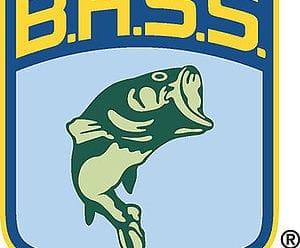
AFTCO & Bass Fishing Hall of Fame Grant Applications Due Tomorrow!
Two great opportunities are available for bass fishing organizations, clubs, groups and agencies looking to do conservation projects in 2025 to get funds to help support their projects. Grant proposals […]
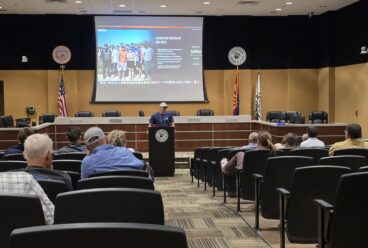
2024 Annual Business Meeting Minutes Posted
The 2024 Annual Business Meeting Minutes have been posted on the event page: https://www.friendsofreservoirs.org/event/2024-annual-business-meeting/ These minutes will be formally approved by vote at the 2025 Annual Business Meeting. Please review […]
Reminder of Quarterly RFHP Call
Remember to mark your calendar for the April 16 call of RFHP representatives! Reservoir Fisheries Habitat Partnership Virtual Meeting
Donate Today
to support similar habitat projects


